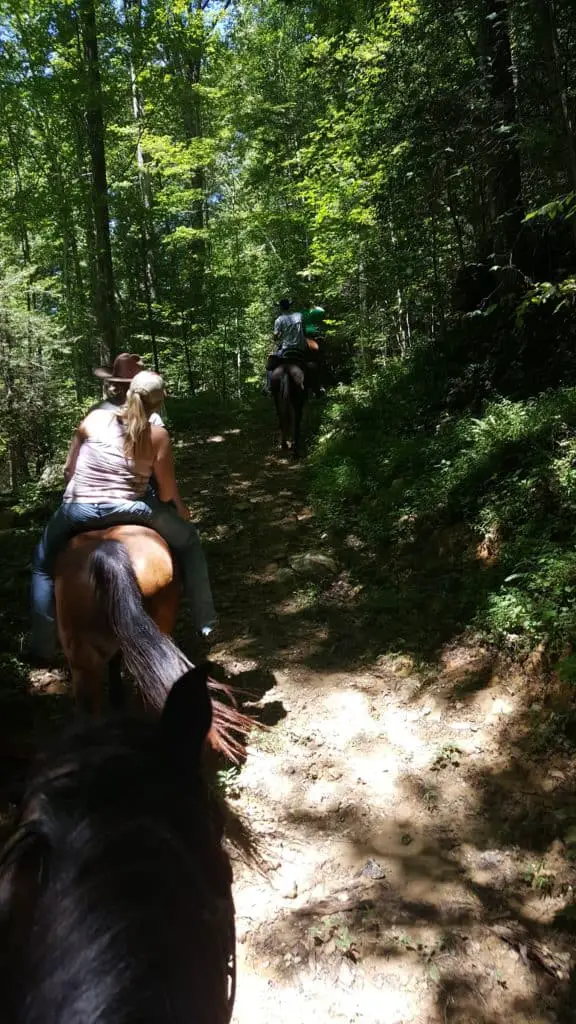Recently I was out in the pasture was the horses I noticed one of them huge cracking on their hoof. After seeing this I thought to myself “How can I prevent hooves from cracking?“
After thinking about this I decided to do some research. And it turns out it’s not that hard at all. Most cracking in horse hooves is caused by a lack of preventative care such as regular trimmings and nutrition. A cracked hoof can cause your horse some serious soreness so let’s dive into some preventative care!
How often do my horses’ hooves need to be trimmed?
In order to prevent cracking hooves, it’s best to set a schedule for either you to trim your horse’s hooves or have a farrier come out and do the job for you. According to The University of Minnesota, that schedule should vary depending on the time of year. In the winter months horse’s hooves actually grow a little bit slower so you can trim them about every 12 weeks. During the summer months, horse hooves grow a bit faster so they will need to be trimmed about every 8 weeks.
I like to intermix both professional and DIY trimmings. About twice a year I have my farrier come out and really clean them up nicely. Additionally, if we need to do any shoeing for an upcoming trip I will have him come out. But most of the regular maintenance I do myself, with the help of the Mrs!
How do I trim them myself?
The process can be quite a bit daunting; however, it’s not impossible after you do a little bit of research to understand the parts of the hoof. Keep in mind that I am no expert at this, just a cheapskate who happens to own a few horses, the steps below are what I follow and I have had no real issues. However, taking too much off the hoof or taking off the wrong part can cause your horse some serious pain. All of this being said, you can prevent cracking hooves by trimming them on a schedule, sometimes your farrier might not be able to make it out.
Also, you will need to lift one hoof at a time off the ground which can be a bit difficult or even dangerous depending on your horse. One of my horses is quite scared of this process and is a PITA! My farrier actually likes to give her a bit of a sedative. He was an EMT / Nurse for about 30yrs before becoming a farrier and is a very cool guy, fun to watch him do it in 1/8th the time it takes me.
The first step in trimming your horse’s hooves yourself is to thoroughly clean the hoof your working on. Don’t be a fool like me and try to clean all four hooves in advance only to have them get dirtied up while you work on the first hoof. Make sure to get into all of the nooks and crannies!
Next, using your nippers trim off the necessary bits. Make sure to remove any damaged or cracked pieces. If you have a farm dog as we do, the trimmings are actually awesome little dog bones. Again, make sure you have done your research! You don’t want to hurt your giant fur-baby do you?
Lastly, I like to go back with a file and clean up the edges. My farrier has a very cool drill attachment that he uses for this step. This just helps to make the hoof look nice and break down any sharp edges left behind by the nippers. Just like when you trim your own nails.
Optionally, you can apply a hoof conditioner to the hoof that you have trimmed up.
What if the area I live in is often wet? Won’t that cause cracking?
If you live in a wet area, or it is the rainy season, you may want to consider servicing your horse’s hooves a little more often to prevent cracking hooves. You may also want to consider a hoof sealant. Hoof sealant helps to protect the hoof from something called hoof flaring, abscesses and white line disease.
Keep a careful eye out for a condition known as thrush. Thrush is a bacterial infection of the frog that slowly eats into the hoof. When you expect a lot of rain, take the time to clean each hoof on a daily basis as the primary cause for this is hard-packed dirt/mud. In advanced cases, this can cause lameness in the horse as their foot becomes sore due to the infection. If you suspect your horse has Thrush, keeping the area clean and dry is often times the best course of action to take. However, if the horse starts to show signs of lameness, it’s time to call the vet or the farrier.
What is a farrier?

My wife loves to go to the nail salon and get her nails all trimmed and painted. I’m sure many of you have experienced finding this bill on your credit card right? A farrier is kind of like the nail stylist my wife likes to go to, although oftentimes the customer is a bit less cooperative!
They specialize in hoof care. A farrier can trim hooves, treat thrush and other diseases related to the hoof, they are also the person that you would call to shoe your horse. A seriously cracked hoof is not something that I would personally try to repair. In those rare cases, I like to call my farrier who promptly tells me that regular visits would have prevented the hooves from cracking, and he’s completely correct! Sometimes I like to think that I can do it all myself but often times I find that that can be overwhelming. Find a farrier you like and keep hiring them so that you can develop a relationship, oftentimes they will call you when they happen to be in the area and help you keep track of regular maintenance.
Properly shoeing your horse is a bit of an art form and takes some practice to get down. Personally, I have never tried it as we do not shoe our horses very often. On one occasion we took a trip to the beautiful smokey mountains, the rocks there are often times slippery so we had to shoe our horses with special horseshoes designed to add extra grip as well as provide some protection from sharp rocks.
What is a hoof conditioner?
A hoof conditioner is a chemical product that is applied directly to the hoof. Generally, I apply this every time I trim the hoof. Its purpose is to protect the hoof in both wet and dry conditions, as well as provide some hydration and nourishment to strengthen the hoof.
You may be asking yourself now “Wild horses don’t get this kind of protection, why do mine?” That’s an awesome point! Glad you asked! The problem here is domestication. We contain our horses, we stall them, and due to this, we need to regularly trim our horse’s hooves so that they not only look nice but also don’t crack. During this process of maintaining our horse’s hooves, we actually remove a natural protectant. Applying a hoof conditioner actually replaces this and prevents hooves from cracking.
